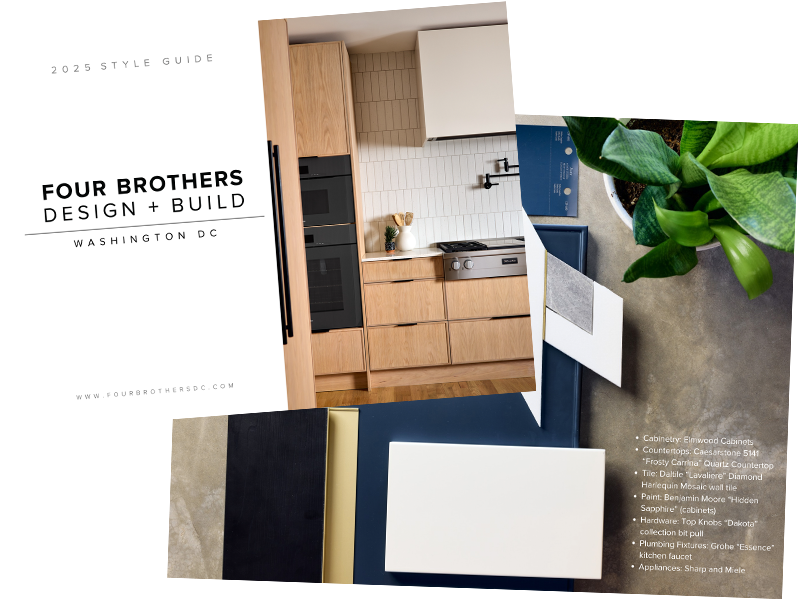Themost important part of any house is the foundation, which at 753 was indire need of attention. The existing foundation was a variation of thetraditional “pier and beam” model. Typically, a pier and beamfoundation incorporates spot concrete footings (dug into the groundbelow frost level), upon which concrete or wooden piers sit. These inturn hold up support beams, which carry the floor platform above. Onemajor advantage of a pier and beam foundation system is the crawl spaceunder the house, which allows easy access to electrical and plumbinglines. (Any homeowner who has had to jackhammer out a section ofconcrete slab to access a plumbing leak, would surely savor thisbenefit.) The crawl space also allows for the option of installingcentral heating and air duct work.
At753, the bottom floor joists span outside party walls (built on solidconcrete footings), with two center support beams resting on brickpiers. While the outside party walls were structurally sound, thecenter support beams in the back half of the house were rotten and thebrick piers were crumbling. This is the area of the house where awater leak had rotted much of the structural wood, including all thefloor joists.
Afterremoving the rotten floor joists, support beams, and bricks from theoutdated piers, we were ready to begin the process of restoring thefoundation to structural acceptability. We began by building a woodenform on top of the brick ledge on the party walls in the back portionof the house (where the rotten floor joists had been removed). Intothis form, we poured concrete (reinforced with rebar), creating a bondbeam onto which we attached a pressured treated sill plate.
Next,we dug evenly spaced holes down the center of the building,approximately two feet by two feet, and 12 inches deep, where suitablebearing soil was reached. When the holes were finished, we builtwooden forms with lumber scraps, and set them in the holes. Intothese forms concrete was poured (reinforced with rebar), which made ourfootings. Size, frequency, and depth of footings is determined by anengineer, and reflected in the structural section of a contractorsworking blueprints. Usually, the engineer specifies footing depth aswell, which should be below the frost line. At 753, footing depth wasnot an issue since the crawl space will be insulated to preventfreezing.
Afterthe concrete footings cured (72 hours), we attached pressure treatedsupport posts to the footings using metal post anchors. Once thesupport posts were leveled at the correct height, we set our 2x12triple support beam on the posts (tied together with metal straps),which, along with the bond beam will carry the floor structure. Twosimilar beams (resting on footings and support posts) were inserted inthe front portion of the house to carry existing floor joists spanningover 30 feet.
Lastly, we dug down five feet around the exterior back wall and along the sidedogleg, in order to parge and waterproof exterior foundation walls.
-
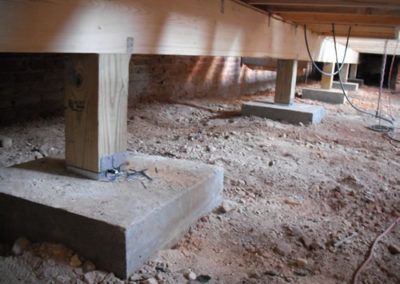
Pier & Beam Configuration Spanning Length of House
-
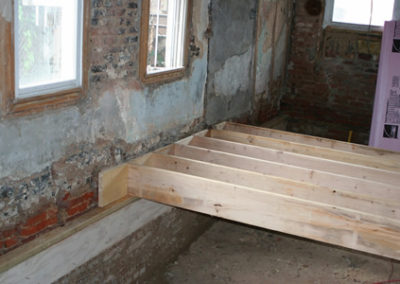
New Floor Joists Sitting on Bond Beam & Sill Plate
-
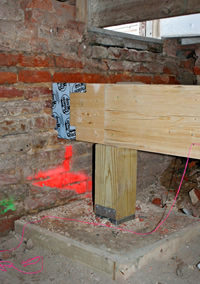
Support Beam Wrapped with Ice and Water Shield Where it Meets Exterior Wall
-
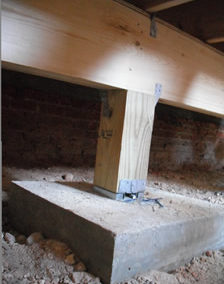
Concrete Footer, Support Post & Support Beam on Which New Joists Rest
-
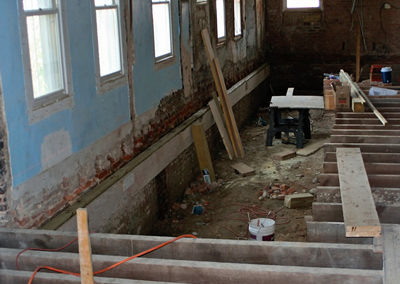
Sill Plate Fastened to Bond Beam on which New Joists Will Rest
-
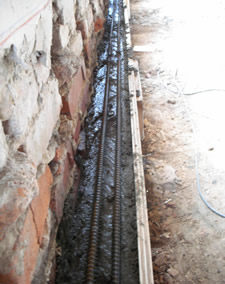
Concrete Poured on Party Wall Ledge for Bond Beam
-
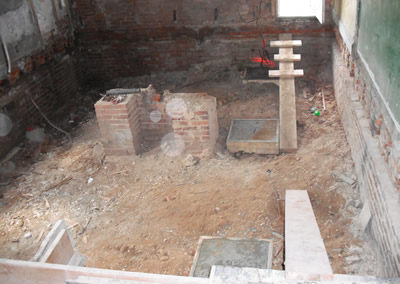
Old Brick Support Piers & New Concrete Footings
